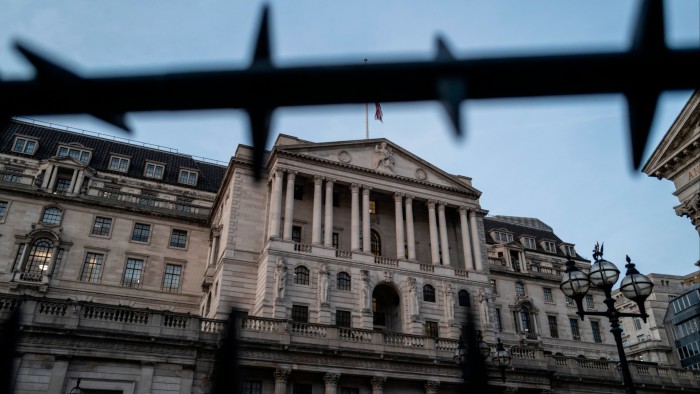Unlock the Editor’s Digest for free
Roula Khalaf, Editor of the FT, selects her favourite stories in this weekly newsletter.
The UK’s long-term borrowing costs soared to their highest level in 27 years on Wednesday, as gilts were swept up in a global bond sell-off sparked by Donald Trump’s trade war.
Yields on 30-year gilts climbed 0.28 percentage points to just over 5.63 per cent early afternoon on Wednesday, exceeding an earlier multi-decade high set in January to trade at levels last seen in 1998.
The yield on the 10-year gilt, which moves inversely to prices, surged 0.16 percentage points to 4.76 per cent, while the pound declined against the euro.
The moves came as investors also dumped US Treasuries in a reflection of growing questions about America’s status as a haven asset. UK government bond prices often move in line with the US market.
The movements in global asset prices were a sign that markets felt that the US had “lost control of its senses” in terms of economic policymaking, said Simon French, chief economist at Panmure Liberum.
“Normally when the US underperforms it takes the gilt market with it,” said Tomasz Wieladek, chief European economist at T Rowe Price. “The long end of the curve is turning into a bit of a risk asset because there’s a huge amount of uncertainty . . . there’s very little liquidity.”
Pooja Kumra, senior rates strategist at TD Securities, said gilt yields were being pushed higher by investors selling liquid assets in a rush to cash. “Global funds end up selling global assets [such as] gilts for any margin calls or to get easy liquidity to meet crunch,” she said.
The rising UK yields will add to pressure on the UK government, which is already challenged by tight public finances and a weakening growth outlook.
Craig Inches, head of rates and cash at Royal London Asset Management, said the surge in long-dated gilt yields was also fuelled by concerns about UK growth and the possibility that the government would have to issue more debt in response.
“It’s a fear that the only option that governments have is to turn on the fiscal taps,” said Inches. UK chancellor Rachel Reeves has vowed this week that she will stick to her fiscal rules.
The rise in yields comes even as investors harden their bets on Bank of England interest rate cuts, with some economists advocating a half-point reduction in the BoE’s official rate at the central bank’s May 8 monetary policy announcement.
Others asked if the BoE could pause its bond-selling programme if the situation in markets continues to deteriorate.
“When it comes to the BoE’s bond sales, they have set a high bar to changing the pace, but if they conclude the gilt market is becoming dysfunctional — as was the case back in 2022 — then there is at least precedence for intervention,” said George Buckley, an economist at Nomura.
Buckley added that if the economic backdrop continues to worsen, the BoE may need to meet sooner than its scheduled May gathering.
The sell-off came as China announced additional retaliatory tariffs on US imports, taking total duties to 104 per cent and matching the level applied to Beijing by Trump since his inauguration.
https://www.ft.com/content/1d79c97f-e35f-4f32-baad-65efe95842e6


